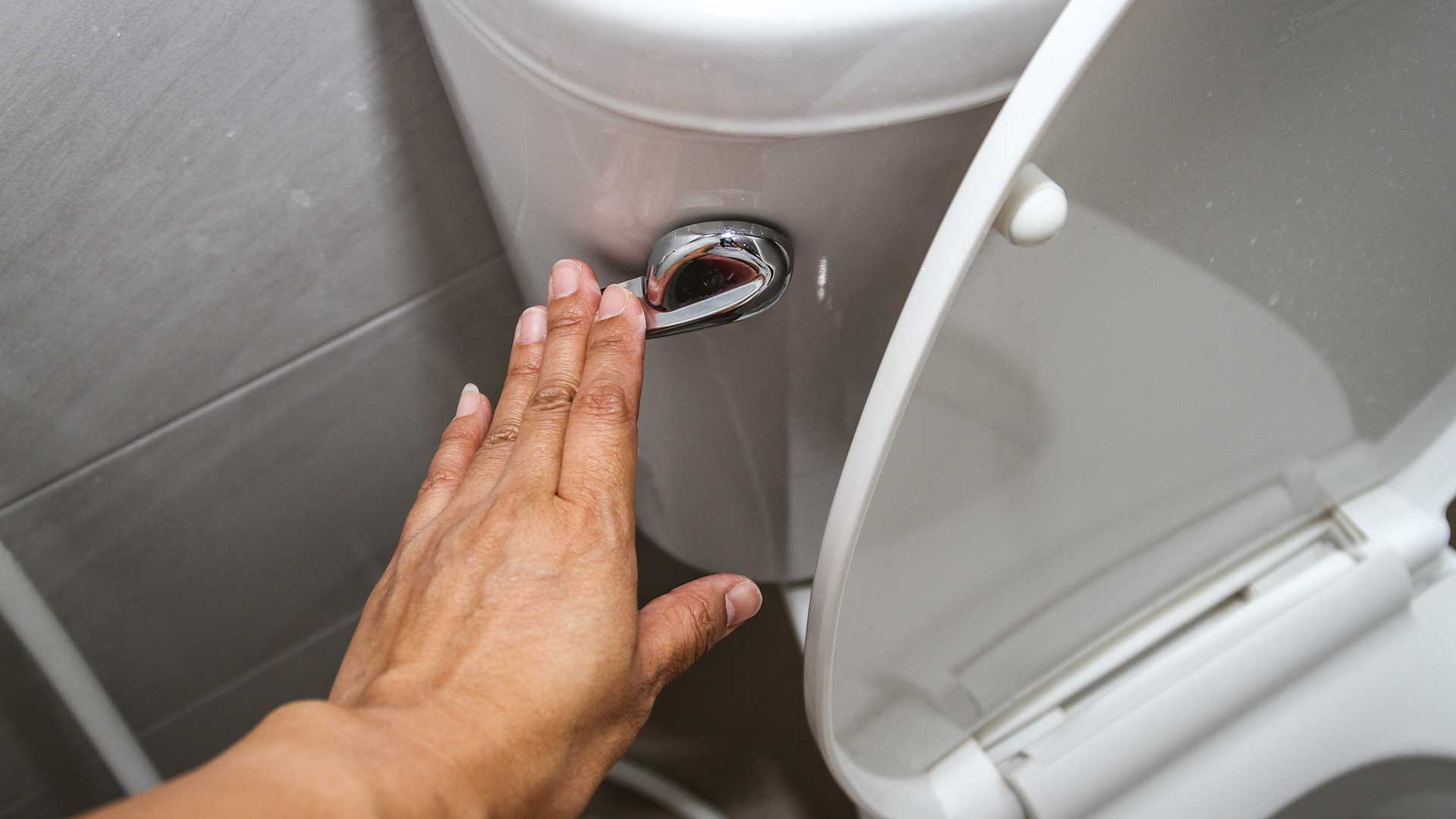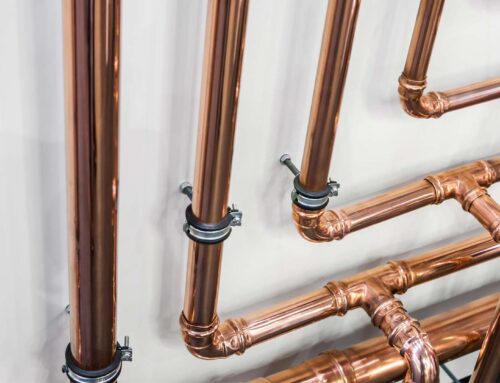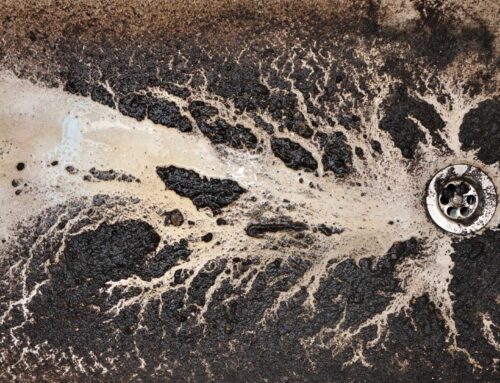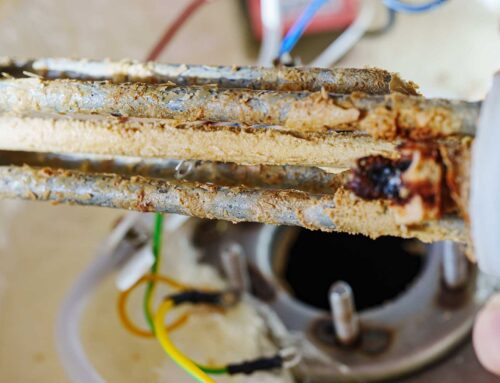Are you tired of jiggling the handle multiple times just to get your toilet to flush properly? A weak toilet flush isn’t just frustrating, it could also be a sign of bigger problems lurking in your plumbing system. To make matters worse, this common household problem wastes a lot of water. That’s not good for the environment or your utility bills. If you’ve been double flushing for so long that it’s becoming second nature, it’s time to figure out why your toilet won’t flush and how you can fix it.
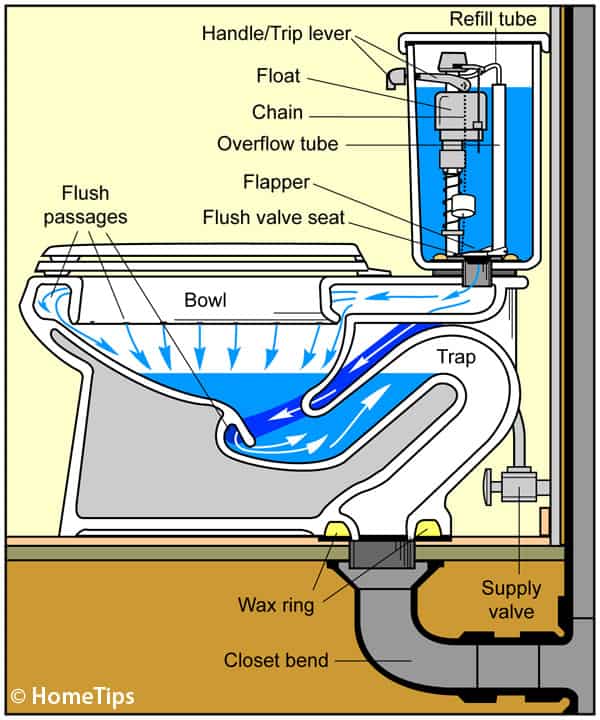
How Your Toilet Actually Works
Before you can start troubleshooting, it’s important to know how your entire toilet works. Your toilet operates on a surprisingly simple system. For a “proper flush”, you just need gravity and good water pressure.
When you press the flush handle, it lifts a rubber component called the flapper valve inside the tank. This action releases water stored in the tank. The water then flows into the bowl through two pathways: small rim jets around the bowl’s edge and a larger siphon jet at the bottom.
Common Reasons For Weak Toilet Flushes
Now that you know how a toilet is supposed to work, let’s figure out why your toilet isn’t working correctly.
Low-Quality or Poorly Designed Toilets
Ironically, some toilets simply aren’t built to flush effectively. Back in the 1990s, the Energy Policy Act required toilets sold in the US to use 1.6 gallons of water or less per flush. At that time, most toilets used around 7 gallons per flush. To meet the requirement, some manufacturers traded flushing power for water conservation. As you can imagine, toilet users weren’t happy. Who wants a toilet that won’t flush?
Thankfully, low-flow toilets have gotten quite a few upgrades since then. Manufacturers eventually figured out how to adjust water use without sacrificing flushing power.
If you’re dealing with an older low-flow toilet that consistently requires multiple flushes, upgrading to a modern, high-efficiency toilet (HET) is the best way to solve the problem permanently. We currently recommend Toto and Kholer toilets. To get the best toilet recommendation for your household and a stress-free switch, request a free estimate from Barnett today.
Insufficient Water Supply
Another common reason behind weak flushes is low water levels in your toilet tank. When there isn’t enough water stored in the tank, the flush doesn’t have enough pressure to clear the bowl effectively.
To figure out if this is your issue, check your tank’s water level. Remove the tank lid and look inside. The water should sit close to the fill line marked on the inside of the toilet tank. If the water level is too low, you can adjust the float or fill valve to increase the amount of water stored between flushes.
This simple adjustment could be enough to get your toilet to flush correctly the first time.
Worn-Out or Malfunctioning Flapper Valve
The flapper is like a gatekeeper in your toilet’s flushing system. This rubber flapper controls how much water flows from the tank into the bowl during each flush cycle. Over time, flappers can warp, crack, or become misaligned.
When a damaged flapper doesn’t open fully or closes too quickly, you don’t get enough water in the tank to siphon out the waste. Fortunately, flappers are inexpensive and relatively simple to replace with a little time and a few basic tools.
Here is a quick tutorial if you want to try replacing your own toilet flapper.
Clogged Flow Holes
Mineral deposits are another common issue that cause weak toilet flushes. Mineral deposits from hard water can accumulate around the rim jets and siphon jets, reducing the water flow during flushing. These small holes direct water into the bowl at specific angles to maximize flushing efficiency. Even minor blockages can have a big impact.
You can clear these clogs using a straightened wire coat hanger to poke through each hole. Then, clean your toilet with a descaling agent. You can use household products like vinegar or baking soda. Regular maintenance of these flow holes will prevent buildup and keep your toilet flushing properly.
Partial Clogs in the Drain
Sometimes the problem isn’t with your toilet itself but with the drain line beyond the bowl. Partial clogs in the sewage line will slow down the water flow leaving your toilet, causing those annoying weak flushes.
Signs of partial drain clogs include:
- Slow water drainage
- Gurgling sounds from other drains when you flush
- Water backing up in nearby fixtures
A standard plunger can usually dislodge minor clogs. If that doesn’t work, you may need a professional plumber to come clean the drains.
Hard Water Buildup
Since hard water is a big deal in California’s Bay Area, its impact is worth mentioning twice. Hard water contains high levels of minerals that can accumulate in the internal structures of your toilet, like tank drains, the toilet bowl, and the flush valve. This buildup could be the culprit behind a toilet that won’t flush.
To decrease hard water build up, use descaling agents regularly. You also might want to consider installing a whole-house water softener to address the root cause of hard water buildup. Both solutions can restore your toilet’s flushing performance and prevent future hard water related issues.
Flushing Inappropriate Items
Even products labeled as “flushable” can contribute to a clogged toilet or weak flush. Items like wet wipes, cotton swabs, and feminine hygiene products don’t break down quickly in water. This can create partial blockages that reduce flushing efficiency.
Stick to flushing only toilet paper and human waste. Dispose of all other items in the trash to keep your toilet working properly and prevent costly plumbing problems.
Risks of Ignoring Your Toilet’s Weak Flush
A toilet that won’t flush well might not seem like a huge deal. After all, it just takes a few jiggles of the toilet handle and you’re good to go, right? Wrong. Ignoring a toilet that won’t flush gives the issue time to escalate. Here’s what could happen if you ignore your toilet’s weak flush for too long:
High Water Bills: Multiple flushes waste a lot of water. Depending on your toilet model, each flush uses between 1.28 and 6 gallons of water. Those extra flushes add up quickly on both your monthly water bill and the impact on the environment.
Worsening Clogs: Partial blockages that cause weak flushes usually get worse over time. What starts as a minor drainage issue can develop into a complete blockage. It’s better to clear the clog now than wait for it to become a plumbing emergency.
Potential Pipe Damage: Persistent drainage issues could mean there are problems with your home’s main sewer line. Ignoring these warning signs may lead to pipe damage, sewage backups, or foundation issues that require extensive repairs.
How to Fix a Toilet That Won’t Flush
Many toilet flushing problems can be fixed with DIY solutions, but not all. Here’s how to know when to call in the professionals.
Step 1: Try DIY Solutions
Try plunging to clear minor clogs, adjusting tank water levels, cleaning mineral deposits from rim jets, or replacing a worn flapper. These repairs typically cost less than $20 and can be completed in under an hour.
Step 2: Call a Professional
If your DIY fixes didn’t work, or if you just don’t have the time or desire to mess with them, call Barnett Plumbing at (925) 294-0171.
If you suspect your weak toilet flush issues are caused by pipe damage, it’s better to skip the DIY phase and call a licensed plumber. We have specialized tools and expertise to diagnose complex plumbing problems and find the best solution.
Barnett Plumbing & Water Heaters: The Greater Bay Area’s Favorite Plumber
As a locally owned and operated plumbing company, we understand the unique challenges homeowners in the Tri-Valley region face. We know that you don’t have time to deal with a toilet that won’t flush or a water heater that has gone out. Our quick response times ensure your plumbing problems don’t disrupt your daily routine.
When you call or schedule an on-site estimate — whether for a repair or a replacement — there will be no pressure. No obligation. We will not sell you a service you don’t need or want. It’s the Barnett promise.
If you’re ready to put your double flushing days to an end contact Barnett Plumbing today. Our skilled technicians will figure out why your toilet won’t flush and get it fixed in no time.

